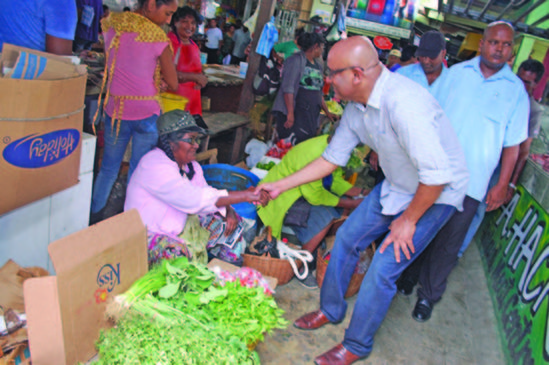
The price of basic foodstuff including milk, fish and eggs, have steadily increased over the past year, with the price for at least one category of products increasing by as much as 10 per cent.
This is according to the Bank of Guyana (BoG) 2018 Annual report. According to the report, the price for a domestic basket of food (variation of an economic term that tracks inflation in consumer products) increased by 3.0 per cent.
According to the report, this is a reflection of increases in the price of fruits (by 10.9 per cent), meat (8.2 per cent), fish and eggs (4.2 per cent) and alcohol, milk and related products by 2.3 per cent.
The Central Bank noted that unpredictable weather was largely responsible for the increased food cost. But food is not the only thing that has been on the rise. According to the report, the cost of medical care and health services climbed by 2.1 per cent. Other sectors were also hit by increases.
“The transportation and communications category registered an increase of 1.9 per cent relative to 1.1 per cent decline at the end of Dec 2017. The sub-category of operation/personal transport (tires, gas, parts and repairs) increased by 9.8 per cent compared to an 8.3 per cent decline at the end of December 2017.”
The Central Bank
“There was an increase in the price index of housing by 1.1 per cent compared to 0.4 per cent rise for 2017. This was due to the upward movement in fuel and power (domestic gas, kerosene and electricity) by 4.8 per cent compared with the 1.9 per cent increase at end of December 2017.”
Declines
It is not all bad news for consumers, however, as the prices for some products like vegetables and sugar declined. The price of items like footwear also declined, though the reason is nothing to clap about. According to the Central Bank, this is because fewer people are spending in the domestic economy.
“Conversely, there were declines in the prices of pulse and pulse products, vegetables, sugar, honey and related products and cereals by 8.4 per cent, 1.7 per cent, 1.5 per cent and 0.3 per cent respectively.”
“There were declines in the price indices of footwear and repairs, education, recreation and culture, clothing and furniture by 12.6 per cent, 1.7 per cent, 1.6 per cent and 1.3 per cent respectively; attributed to lesser domestic spending,” the report states.
According to the BoG report, the Inflation Consumer prices measured by the Urban Consumer Price Index (CPI) registered an overall inflation rate of 1.6 per cent… a level generally considered as stable by economists and a rate in the range recommended by institutions like the Federal Reserve.
“The monthly average inflation rate was 0.8 per cent. The monthly change [year to date] in the Consumer Price level ranged from as low as -0.4 per cent in April to a high of 1.8 per cent in October,” the report stated.
The International Monetary Fund (IMF) had predicted back in 2017 that Guyana’s inflation would continue to rise in 2018. They had urged Governments to urgently press ahead with much-needed structural reforms to ensure that growth is sustained and inclusive.
It had also recommended that countries improve their infrastructure, invest in human capital, encourage more females in the labour force, increase oversight of the labour market, enhance governance and anti-corruption efforts and take steps to further trade.
For the year 2018, the IMF had projected a 2.6 per cent increase in Guyana’s inflation rate. The eventual figure turned out below the projections of even Finance Minister Winston Jordan.
Following previous walkabouts in the markets and other consumer zones, Opposition Leader Bharrat Jagdeo had previously warned that consumer spending was on a decline and that one of the reasons for this was the Government implemented Value Added Tax (VAT) measures.



